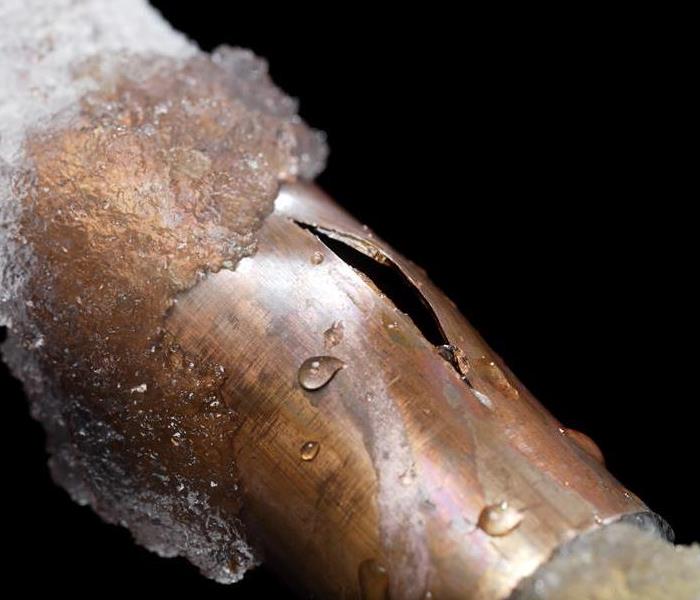Some Helpful Tips to Prevent Pipes from Freezing
8/12/2024 (Permalink)
The residents of Jackson Hole and the surrounding areas are no strangers to cold weather. When you live more than a mile above sea level, snow and ice comes with the territory. Most people know how to protect their property from frozen pipes, but it never hurts for a refresher course. Plus, Autumn weather can surprise us with unexpected temperature drops, leading to homeowners calling SERVPRO® of Jackson Hole for emergency service.
Best Practices for Residential Properties
One of the major sources of water leaks are outdoor faucets. Be certain to disconnect hoses and other connected items before winter. If possible, shut the water off from an indoor value and allow the line to drain completely. Cover exterior faucets with an insulating cover during the coldest months.
If you have exposed water lines running in a crawl space or basement, make sure the area is warm enough to prevent freezing. Check basement window seals and cover air vents to maintain enough heat to allow for free-flowing water in your pipes. The same holds true if you have water lines inside of your garage or outbuildings. If they aren’t heated, consider insulating the walls, and the pipes. An alternative is to add heating tape around pipes, especially if they are near exterior walls.
What if My Pipes Are Frozen, What Can I Do?
If there are signs your water pipes are frozen, completely or partially, there are options. Partially frozen pipes can result in weak or low water flow. In this scenario, let the water run until the flow returns to normal, and thank your lucky stars that you don’t have a mess on your hands. Even though you got lucky, this should serve as a warning that you need to inspect your plumbing for areas that are exposed to the cold and make the appropriate corrections.
Should you discover your pipes are completely frozen, first shut off the main water supply to the residence. This can be done by turning the main supply valve to the off position. Turn the hot water valve to “on” in a bathtub or kitchen sink. If the water starts flowing, you’ll be able to identify it. Next, work your way around the property, visually inspecting the pipes, and feeling them. You may see frost or condensation on the outside of your pipes, especially in colder areas. Additionally, ice may be seeping from cracks, bulges, or separations in the plumbing. In this case, you’ll need to call in a professional to make repairs before the water can be turned back on.
After the visual inspection, you should be able to identify the frozen area. If there is no damage, you can apply heat to the suspected frozen part of the pipe or heat the area. Electric blankets, hot towels, or heating pads can be wrapped around the pipes to slowly warm them up. You can also use an electric hair dryer to thaw pipes.
If you choose to warm the affected area, rather than only the pipes, use an approved indoor electric space heater. Do not use a kerosene or propane heater inside of a building, ever. Also avoid any heating device which uses an open flame, such as a torch.
I Can’t Find Any Frozen Pipes, But My Water Still Isn’t Flowing
When you’ve exhausted all the options available, but still are without free-flowing water, you can wait it out, hoping for warmer temperatures and natural thawing, or seek help from a licensed plumber. The frozen area might be located behind the drywall or hidden by other construction materials. Plus, plumbers are experienced in finding common trouble spots.
Frozen pipes can be a major inconvenience, but by taking preventive measures, you can minimize the risk. Learn where your pipes are, inspect your plumbing system regularly, and take steps to prevent freezing in the first place. If you find damage caused by a water leak, first shut off the source of the leak, and then call SERVPRO of Jackson Hole for mitigation and restoration services.







 24/7 Emergency Service
24/7 Emergency Service